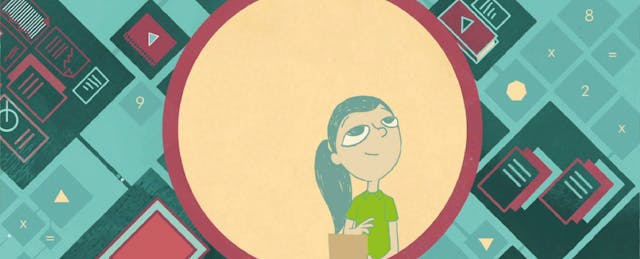Riverside Unified’s journey towards Personalized Learning formally began in September of 2013 when we received the Next Generation Systems Initiative Planning Grant. As we began exploring the four core elements of personalized learning--a profile of the learner, an individualized plan for each learner, competency-based advancement and flexible environments--we began to realize the need for a new component that would hold these other elements together.
This led to a fifth element to Personalized Learning--students as Socially Engaged Contributors. We define a Socially Engaged Contributor as someone who utilizes personal and professional interests, aspirations, and responsibilities to add positively to family, neighborhood, city, nation and world.
This element has helped us articulate our guiding vision for personalized learning: “Preparing students to become purposeful contributors to a global society.” With this clarity, we’ve begun building a personalized learning ecosystem in our schools that is both unique to the requirements of each classroom, as well as unified in its emphasis on independence, goal-setting, self-knowledge, decision-making and action orientation.
Kindergarteners at Hawthorne Elementary, for example, have learning goals posted in their classrooms. At the beginning of this school year, the kindergarten teacher would set a time with each student to confirm a goal’s completion and set the next goal. But students responded with a request that they be able to make their own appointments when they were ready to confirm a goal’s completion and set the next. Because we had a guiding vision for personalized learning that emphasized independence and self-knowledge, the kindergarten teacher was ready to hear what her students were asking and meet that request. That kindergarten classroom now has an appointment board and when students reach their goal, they request an appointment with the teacher.
Schoolwide at Hawthorne, students undertake a passion project, setting their own goals and recording their evidence of learning. While the foundation of all the passion projects is grounded in California content standards, the origin of each individual project arises from a student’s particular interests. In the past, the teacher would have issued preselected curriculum materials and fashioned an assessment or project. Now, if a student is passionate about water conservation, they choose among relevant provided resources, or find their own resources to explore that topic. They might show evidence of learning through the development of a water wise plan of action for their school or home.
At Liberty Elementary, students choose which learning resources they will use to demonstrate knowledge of grade level standards. In addition to the standard text and digital resources, they have access to three makerspaces - a green screen set up, a garden area and a take-apart location. Teams of students work on projects together; team members may be from another classroom, or even a nearby school. In a school where 60% of students are learning English, and where most do not yet have internet access at home, fifth-graders independently run their own Socratic Seminar sessions, keeping notes on a Google doc to debrief with the teacher later.
At Sierra Middle School, students with talent and interest in health and human services can opt into the first of many pathways which combine classroom learning with real-world application--both in the school's classrooms for special education and in the nearby senior center. In addition to working within a specific area of interest, students are able to “flex” their time twice a week in order to collaborate with teachers and students. Students are encouraged to meet with teacher mentors weekly to discuss next steps toward goal accomplishment.
Due to the successes in student learning and the renewal of teacher excitement in designing learning experiences, several other schools have formed an “explore-on-your-own” group that collaborates with the grant participants. Throughout the organization, we are moving away from a time when the teacher is the sole deliverer of information and learning opportunities. Our goal is to give students voice and choice in determining the path of their learning within flexible learning environments that allow for competency-based advancement. This can happen through meaningful collaboration and from immersing the learning in real-life opportunities.


